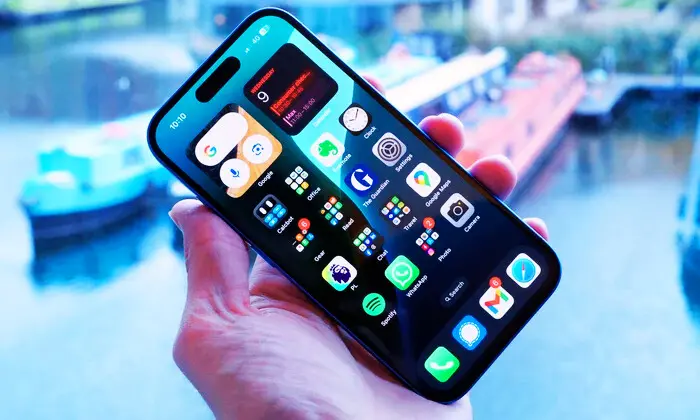Apple’s newest software update, iOS 26, introduces an innovative tool designed to combat one of modern life’s most frustrating problems — spam and robocalls.
The new Call Screening feature allows iPhones to automatically scan and identify unknown callers, helping users avoid scams, telemarketing, and other unwanted interruptions.
Currently available only in select countries and languages, the system acts as a digital gatekeeper, asking unknown callers to identify themselves before the user decides whether to pick up.
Supported Countries and Languages
Apple confirmed that the feature supports Cantonese, Mandarin Chinese, Korean, Japanese, English, French, German, Portuguese, and Spanish.
Each language is region-specific — for example, Spanish is available in Mexico, Puerto Rico, Spain, and the U.S.; French is supported in France and Canada; while Mandarin covers Mainland China, Macau, and Taiwan.
How to Activate Call Screening
To use this feature, your iPhone must be updated to iOS 26, which is compatible with iPhone 11 and newer models.
Once updated:
- Go to Settings → Apps → Phone.
- Scroll down to find the new option: “Screen Unknown Calls.”
- You’ll see three choices:
- Never: All calls ring as usual.
- Silence Unknown Callers: Sends unidentified numbers directly to voicemail.
- Ask for Call Reason: Prompts the caller to state their name and reason before you pick up.
If the option doesn’t appear, restart your device and ensure your region and language settings match one of the supported languages.
How the Feature Works
When someone not in your contacts tries to reach you, Siri (or a Siri-like digital voice) asks the caller to say their name and explain why they’re calling.
While this happens, your phone shows a live transcription of the caller’s response in real time — displayed as chat-style text bubbles on your screen.
You can then decide whether to answer, reject, or respond using preset text options such as “I’ll call you later” or “Send me more information.” These responses are read aloud to the caller by the AI assistant.
If you don’t respond immediately, the phone keeps ringing until you make a choice.
Essentially, Apple has placed a digital assistant between you and unknown callers, providing greater control and privacy.
Early Reactions: Promising but Not Perfect
According to early testers from The Associated Press (AP) and user feedback on social media, the feature works well — but not flawlessly.
One AP reporter praised how smoothly the system handled screening, noting that it successfully blocked marketing calls. Another said it helped stop cold calls from sales databases, which had been a recurring annoyance.
However, not all experiences were positive. Some users complained that important calls, such as from delivery drivers or repair technicians, were being mistakenly filtered or that the callers hung up too soon, thinking they’d reached voicemail.
These minor hiccups show that while the system is effective, human unpredictability can still create occasional confusion.
Competing with Google and Samsung
Apple’s move puts it in direct competition with Google, which has offered a similar Call Screen feature for years on Pixel phones.
Google recently expanded its version to Australia, Canada, and Ireland, and it works even more automatically — the phone itself determines whether a call is spam and hangs up without bothering the user.
However, Google admits the system isn’t foolproof. Some AI misinterpretations can occur, especially if the caller speaks unclearly or in a noisy environment.
Samsung, meanwhile, provides comparable functionality through its Bixby assistant, which can handle text-based call responses on Galaxy devices — a sign that AI-driven call handling is becoming the new standard across mobile platforms.
Apple’s Approach: Privacy First
Unlike its competitors, Apple emphasizes on-device privacy and security.
According to the company, all voice interactions and transcriptions are processed locally on the iPhone, not sent to external servers. This ensures that caller data, voice samples, and transcripts remain private — a crucial point for privacy-conscious users.
Apple has long branded itself as the privacy leader in consumer technology, and this feature reinforces that commitment. While Google’s approach relies on cloud-based AI models, Apple’s offline design prevents sensitive call data from being exposed.
Why It Matters
Spam and robocalls have become a global nuisance, costing individuals and businesses billions in wasted time and fraud each year.
In the U.S. alone, consumers received over 55 billion robocalls in 2024, according to the analytics firm Hiya.
Apple’s new call screening feature could be a major step forward in reducing unwanted interruptions — particularly for users who rely heavily on their phones for work.
For elderly users, the visually impaired, or those vulnerable to voice-based scams, this feature offers an extra layer of protection by allowing them to verify who’s calling before engaging.
Looking Ahead
While iOS 26’s Call Screening is still limited in availability, Apple’s expansion history suggests it won’t remain that way for long.
Experts expect broader language and region support in future updates, likely rolling out to Europe, Turkey, and parts of the Middle East next year.
Until then, users eager to try it can change their iPhone’s region and language settings to one of the supported combinations — although functionality may vary.
A Small Change with Big Impact
At first glance, Call Screening may seem like a small addition, but it signals something much larger: the merging of AI assistance with personal communication.
Apple’s feature turns what used to be a nuisance into a controlled, intelligent interaction — where you, not the spammer, decide how the conversation goes.
As one AP reporter put it:
“For the first time, my phone feels like it’s protecting me — not the other way around.”
With iOS 26, Apple isn’t just updating the iPhone. It’s redefining how we interact with the world — one call at a time.

